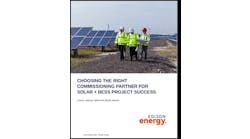By Elisa Wood
October 7, 2010
My first reaction was that the Alliance to Save Energy was stretching a bit by titling its October 6 talk: “Is energy efficiency the key to recovery from the recession?”
But after hearing David Goldstein’s presentation, I must admit I’m thinking about energy efficiency in a whole different way. Goldstein, author of the book, “Invisible Energy: Strategies to Rescue the Economy and Save the Planet” crunched the numbers to show the enormous economic relief efficiency could bring to both the average homeowner and the US government.
He went as far as to suggest we may have averted the mortgage meltdown had we instituted more efficiency over the last few decades. Sound extreme? Consider this.
The average suburban home now costs $175,000. When banks evaluate a homeowner’s ability to pay a mortgage, they look only at that figure. They do not consider the cost to pay utilities, which adds another $75,000 over the life of the mortgage. Nor do they consider the cost to drive back and forth from work to the house, another $300,000.
These energy costs have gone up over the years, while worker income has stagnated since 1973. When energy costs are added to mortgage costs, suddenly homeowners are paying as much as 62% of their gross income to live in their homes. It is not surprising that the lending system went wrong, he said, given that banks looked only at the $175,000 commitment and not the accompanying $375,000.
“Would you invest in a mortgage like that? That is what we are doing every day,” Goldstein added.
How much of a difference can energy efficiency make? Goldstein calculated that green building and transportation costs could chop that $375,000 by half.
Because efficiency reduces utility and transportation costs, it frees up consumer spending power. As a result it could ease several of the nation’s other financial woes, among them our low savings rate, weak consumer spending, trade deficit, inflation risk and joblessness. Efficiency also could take a big chunk out of the federal deficit, given that government is the largest energy user in the nation, he said.
“This recession did not just occur randomly. It is largely a predicted result of fundamental problems,” he said. “Weak energy efficiency policy is at the heart of many of them and is related to all of them.”
How much energy can we save through efficiency measures? More than we think, Goldstein said. Conventional studies indicate the US economy can wring out about 30% savings, but these are cautious estimates, biased toward the low end since no one ever loses their job for underestimating energy efficiency potential. But they might if they over-estimate and as a result the lights go out somewhere because we built too few power plants, he said.
Goldstein suggested that instead of relying on forecasts of energy efficiency potential, we set goals: “We best discover the size of the resource by going out and acquiring it.”
Elisa Wood is co-author of “Energy Efficiency Incentives for Businesses 2010: Eastern States,” www.realenergywriters.com





